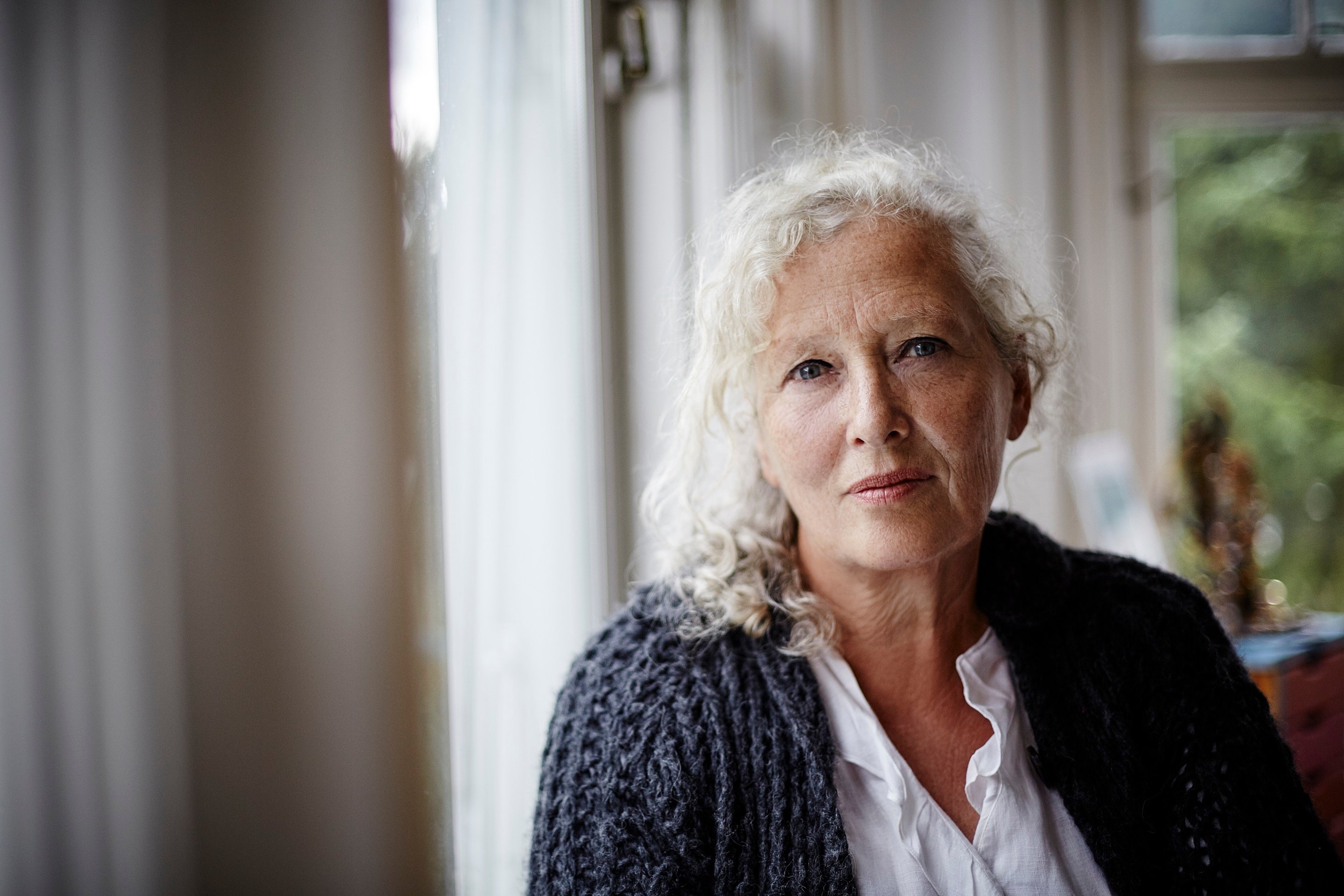Monitoring Late Effects of Breast Cancer Treatment
6 min read

Improvements in screening and treatment have led to a decrease in breast cancer mortality rates over the past 30 years, a trend that is certainly positive. However, the increase in breast cancer survivors also heightens the importance of long-term care. These patients often face late effects of breast cancer treatment that may surface years to decades after cancer treatments have ended.
“Outside of neuropathy, which generally is evident fairly soon after chemotherapy, most late effects are either asymptomatic or don’t appear until 10 or 20 years down the road,” said Dr. Mabel Mardones, breast medical oncologist and hematologist at Rocky Mountain Cancer Centers (RMCC). “All physicians should be discussing survivorship plans with their patients, ensuring patients are being seen once a year by a primary care provider and as often as the oncologist deems necessary according to that plan.”
The long-term effects of breast cancer treatment vary depending on the type of breast cancer and types of treatment employed, as well as the patient’s age, general health, and medical history. Primary care providers are well-positioned to help breast cancer survivors recognize and address the many possible late effects of treatment. Knowing what to look for and what follow-up care is recommended for patients can help them thrive.
Late Effects of Chemotherapy Treatment for Breast Cancer
Chemotherapy and other systemic therapies used to kill breast cancer cells, such as hormone treatments, can impact the entire body. Hormonal treatments may increase the risk of blood clots, stroke, or uterine cancer.
Additional long-term effects of chemotherapy may include:
 Cognitive issues
Cognitive issues- Fatigue
- Heart conditions, such as arrhythmias and cardiomyopathy with or without congestive heart failure
- Mental health concerns
- Osteopenia or osteoporosis
- Ovarian dysfunction
- Premature menopause
- Secondary cancers, especially leukemia and other myeloproliferative disorders
- Weight gain
Late Effects of Radiation Treatment for Breast Cancer
Advances in radiation treatment have led to more localized late effects than chemotherapy treatment. However, possible cardiac and pulmonary effects may lead to systemic health concerns, and localized long-term effects can still significantly impact a woman’s function and quality of life.
Possible late effects of radiation treatment for breast cancer include:
- Brachial plexopathy, damage to the nerves in the arm
- Cardiac conditions, such as chronic pericardial disease and coronary artery disease
- Damage or cosmetic changes to the breast tissue or skin
- Fibrosis or scarring
- Hypothyroidism
- Lymphedema
- Mental health concerns
- Neuropathy
- Pulmonary issues
- Secondary cancer, particularly angiosarcoma
Late Effects of Breast Cancer Surgeries
Any form of breast cancer-related surgery can have long-term effects, including breast-conserving surgery and others used for treatment (lumpectomy, partial mastectomy, and complete mastectomy), breast reconstruction, and breast implant procedures.
Potential late effects of breast cancer surgeries may be:
- Blood clots
- Capsular contracture or other breast implant-related issues
- Cosmetic changes
- Impaired arm and shoulder range of motion
- Lymphedema
- Mental health concerns
- Necrosis of fat, skin, or tissue
- Pain
- Sensation changes
Supporting Breast Cancer Patients After Treatment
Breast cancer survivors continue to require significant care after completing oncology treatments. The exact follow-up care schedule will depend on the patient’s cancer stage and type as well as their treatments. However, all breast cancer survivors have unique care needs that primary care providers must address and monitor along with ongoing specialty oncology care.
Cardiac Effects
Many cardiac health guidelines focus on older women. However, women who receive breast cancer treatment in their 20s and 30s must not be ignored when it comes to cardiac health.
“Let’s not forget that the first cause of death in the United States for women is still cardiac disease,” Dr. Mardones said. “Then you add that extra layer of a cancer treatment in the past, and it becomes even more meaningful to address.”
Patients may experience silent symptoms related to impaired cardiovascular health. Primary care physicians can help mitigate the cardiovascular risk factors by being vigilant in monitoring A1c, cholesterol, and hemoglobin levels.
Cosmetic Effects and Scarring
There are long-term cosmetic effects related to multiple types of breast cancer treatment.
Breast cancer surgeries, including breast-conserving surgery and breast reconstruction, may cause changes in appearance or leave scarring that is psychologically difficult for many women who have survived breast cancer. Additionally, women who have breast implants and then receive radiation treatment to kill cancer cells may develop fibrosis.
Scarring due to radiation treatment can be substantial and may have a long-term effect on the adjacent arm’s breast tissue, pectoral muscle, and movement. It may also cause a complication called a capsular contracture, in which the implant itself becomes scarred and hardened. The oncology team takes steps to prevent this from occurring, but if it does happen, the patient may need additional treatment, including, potentially, another surgery.
Lymphedema After Breast Cancer Treatment
Lymphedema can be a problematic long-term effect of radiation, lymph node dissection, and breast surgeries. The effects of lymphedema are not limited to cosmetic appearance. It is often a chronic condition that can cause pain and may lead to recurrent infections in some patients. Lymphedema also requires additional specialized care to manage.
In the case of lymph node dissection, less may be more.
“The vast majority of risk, when it comes to lymphedema, is directly linked with how many lymph nodes are removed in the area of the axilla,” Dr. Mardones said. “The more you remove, the higher the risk. The less you remove, the less risk. You want surgeons who are on the cutting edge of where the data is about right-sizing – doing less treatment to get the same success for people long term.”
Neuropathy Following Treatment
Neuropathy often shows up soon after cancer treatment has concluded and may impact many activities. There is no meaningful way to determine whether a patient is more likely to experience the numbness, pain, and tingling that comes with neuropathy. Efforts are made to mitigate the risks of developing neuropathy, but this may be an irreversible long-term effect for a minority of breast cancer patients.
Breast cancer survivors with neuropathy may have more difficulty exercising or walking long distances. Neuropathy may also cause more severe or frequent pain for patients who need to spend a good portion of the day on their feet at home or at work.
Osteopenia, Osteoporosis, and Early Menopause
Patients with breast cancer are often placed into chemical menopause to prevent cancer recurrence. Women who undergo premature menopause are deprived of estrogen for nearly a decade or more than women who go through natural menopause. This often has a significant effect on bone health.
“That’s an effect that needs to be taken into consideration when caring for a young woman versus an older woman,” Dr. Mardones said. “We need to make sure we have not forgotten to do a baseline DEXA bone density test and then address bone health proactively, not reactively.”
Psychological Effects of Breast Cancer Treatment
 Late effects of breast cancer treatment include mental health concerns in addition to physical health concerns. If mental health concerns are minimized or left unaddressed, these issues may significantly and negatively affect a woman’s life.
Late effects of breast cancer treatment include mental health concerns in addition to physical health concerns. If mental health concerns are minimized or left unaddressed, these issues may significantly and negatively affect a woman’s life.
Tending to a survivor’s mental health in a primary care setting doesn’t mean you must have all the answers.
“Women often just want to know that someone’s looking them in the eye and really wants to understand where they are. And if where they are today is just wanting to report and vent but not have a solution, that is OK,” Dr. Mardones said. “Sometimes, as physicians, we have a hard time doing that because we’re designed to offer solutions at every possible timeframe. But what I’ve discovered is that many times people just want to be heard. They want to be understood where they are, even though we may not have a solution.”
Be ready to:
- Ask questions about mental health
- Fully listen to the answers
- Help patients find additional mental health support as needed
A Team Approach to Breast Cancer Care
To properly care for breast cancer patients in both the short and long term, a team approach is needed from the initial diagnoses through caring for the late effects of breast cancer treatment. Raising awareness of the possible long-term effects of breast cancer treatments allows all involved in the care process to make informed decisions about health and treatment, including the survivor.
Rocky Mountain Cancer Centers provides cutting-edge breast cancer care that supports the whole person. Refer a patient today.